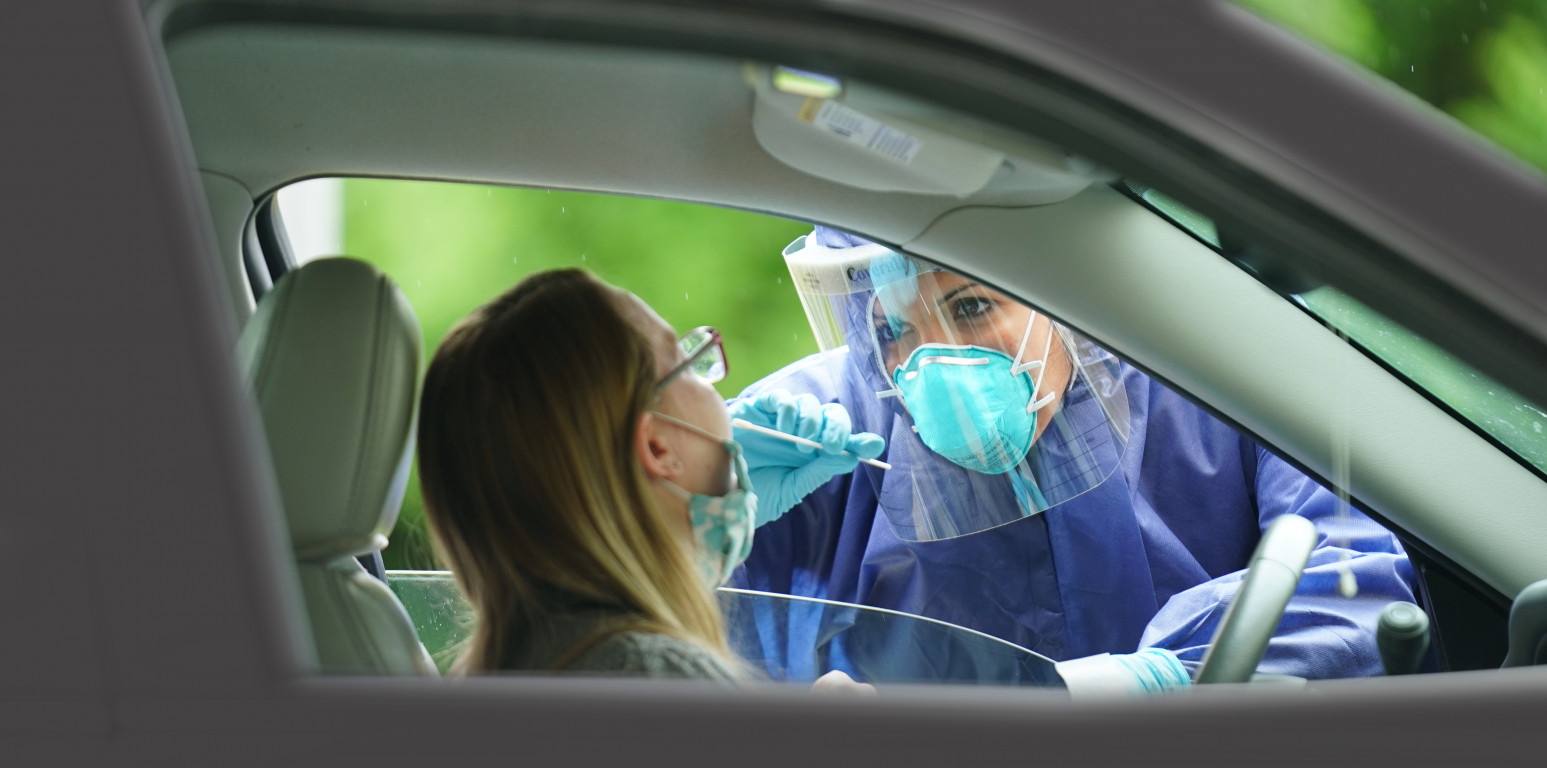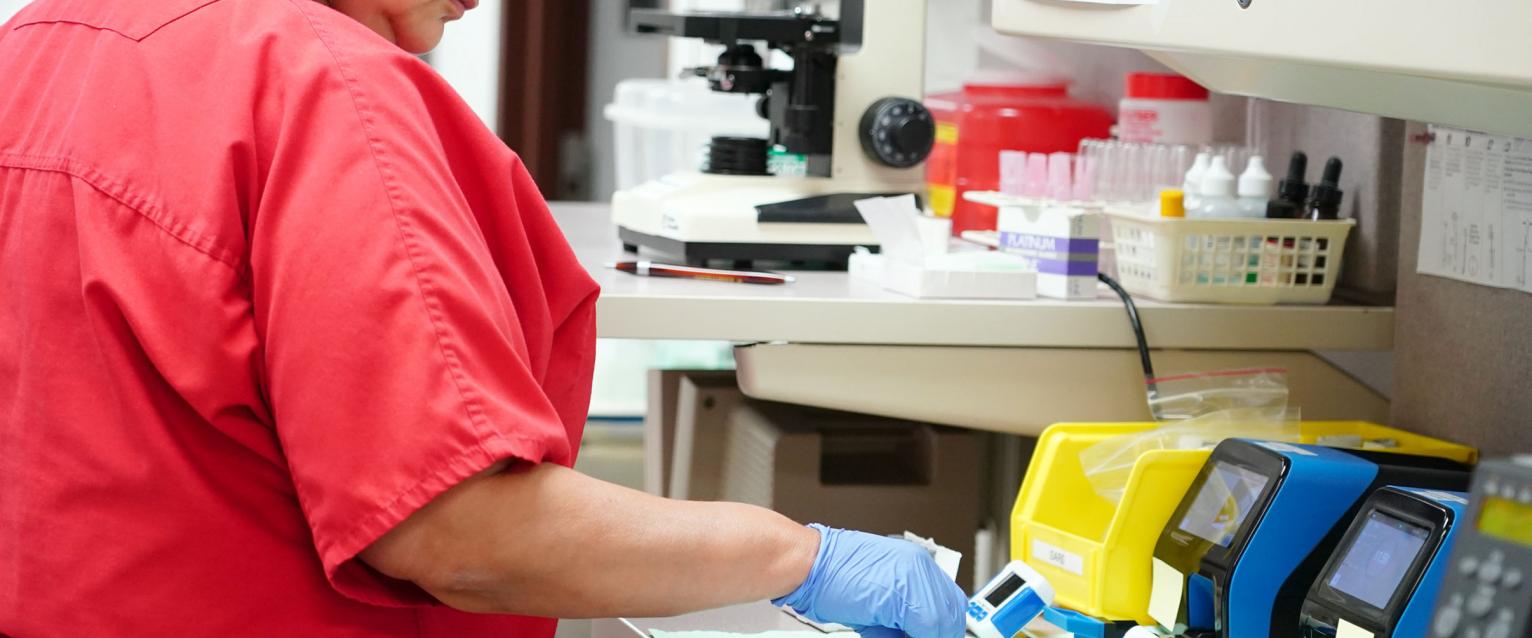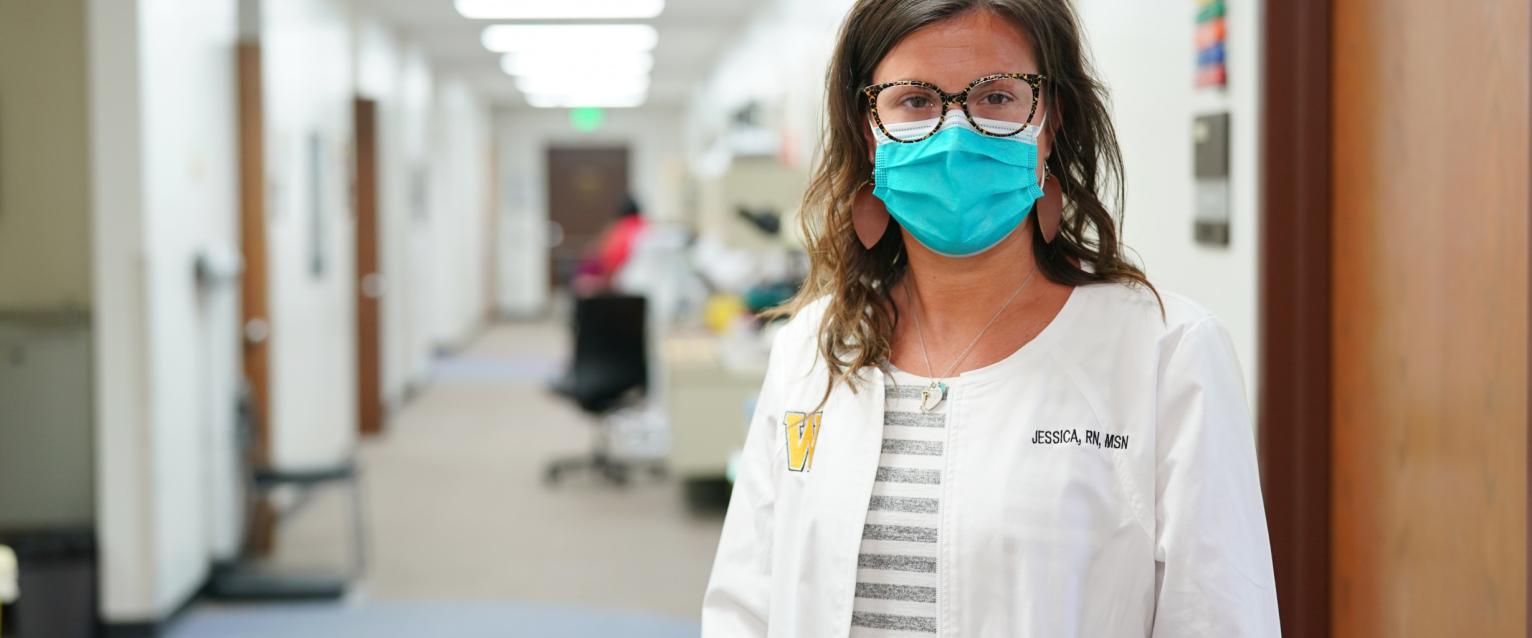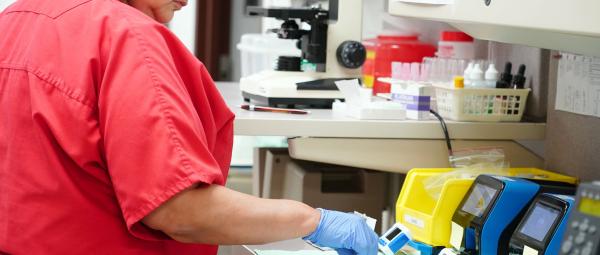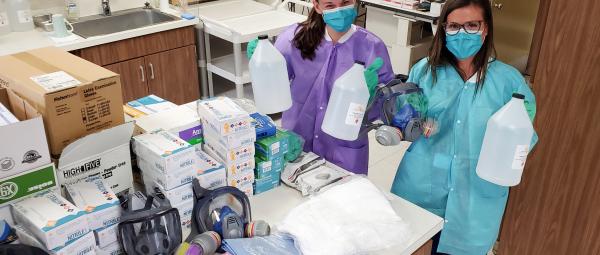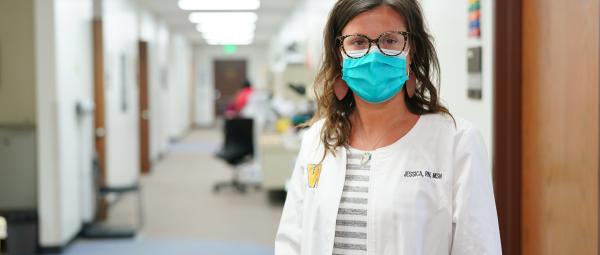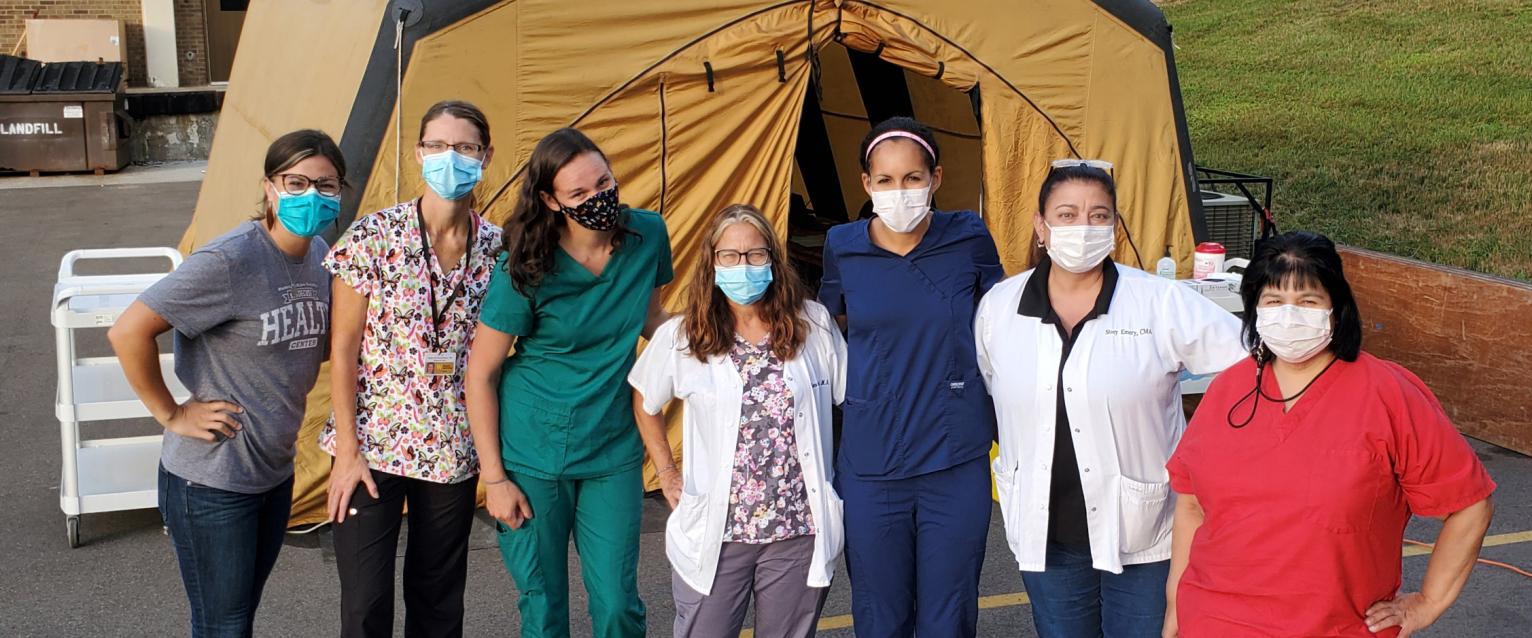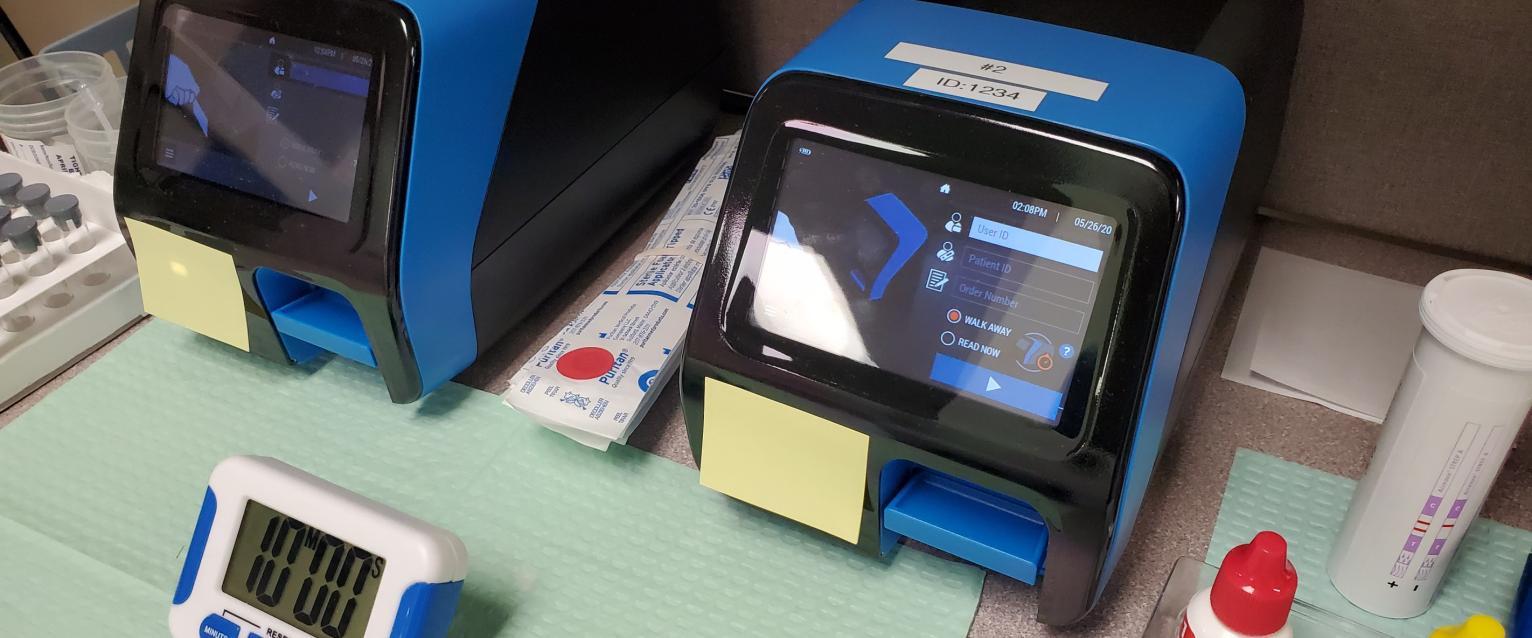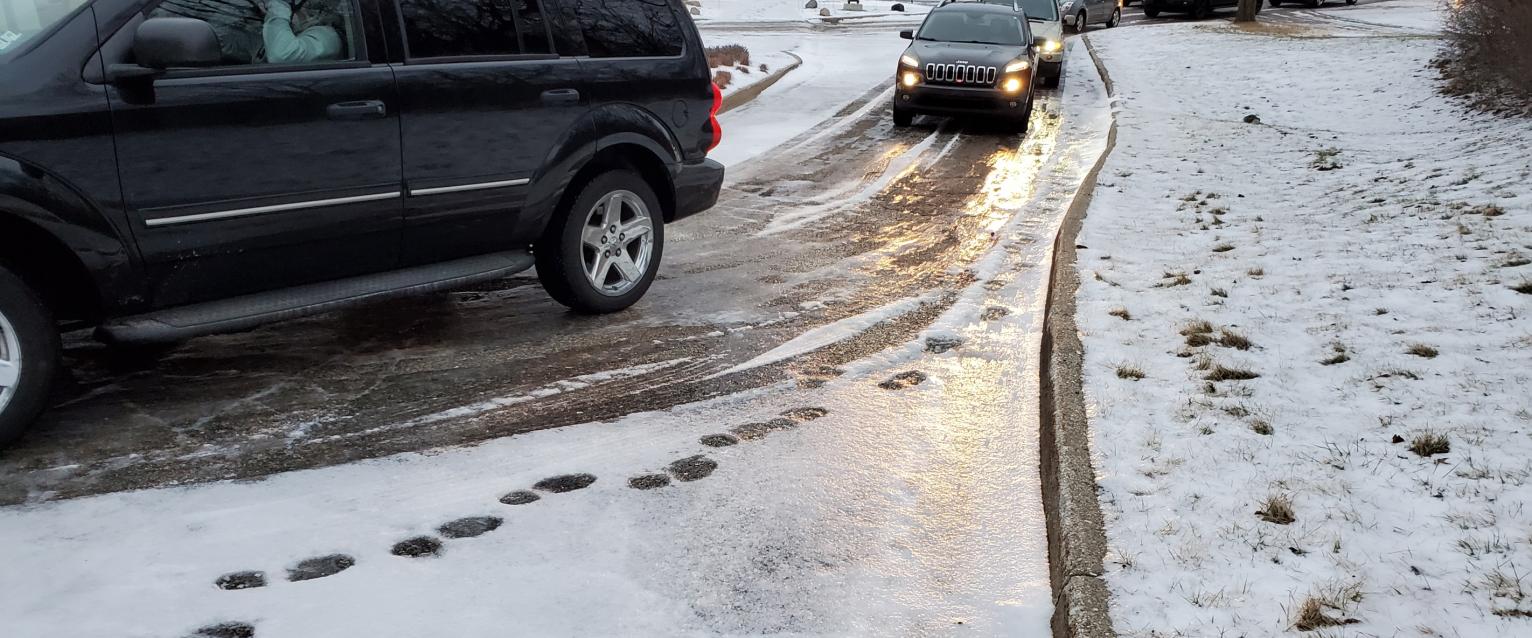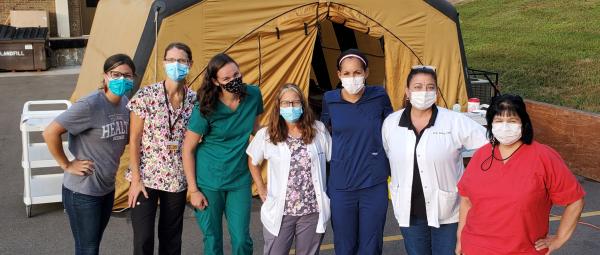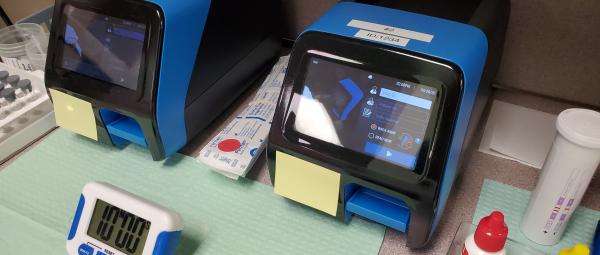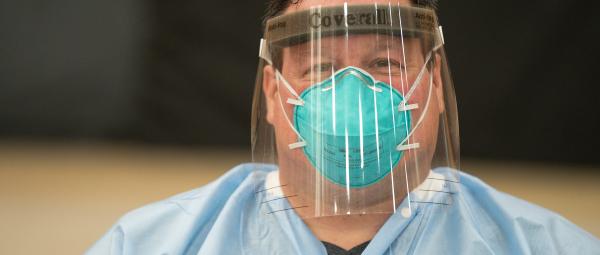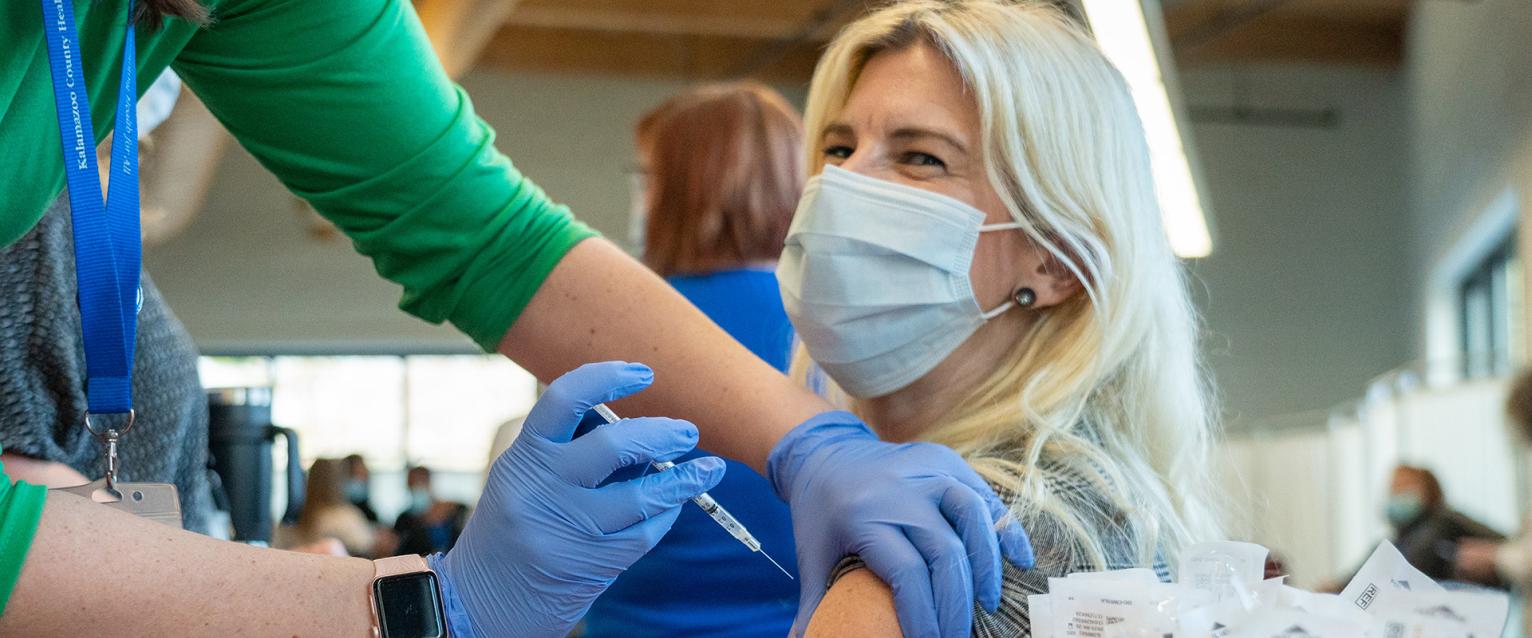In 2020 we discovered new sources of...
Flexibility
Partnership
Creativity
Gratitude

Telehealth Services Launched
Counseling Adapts
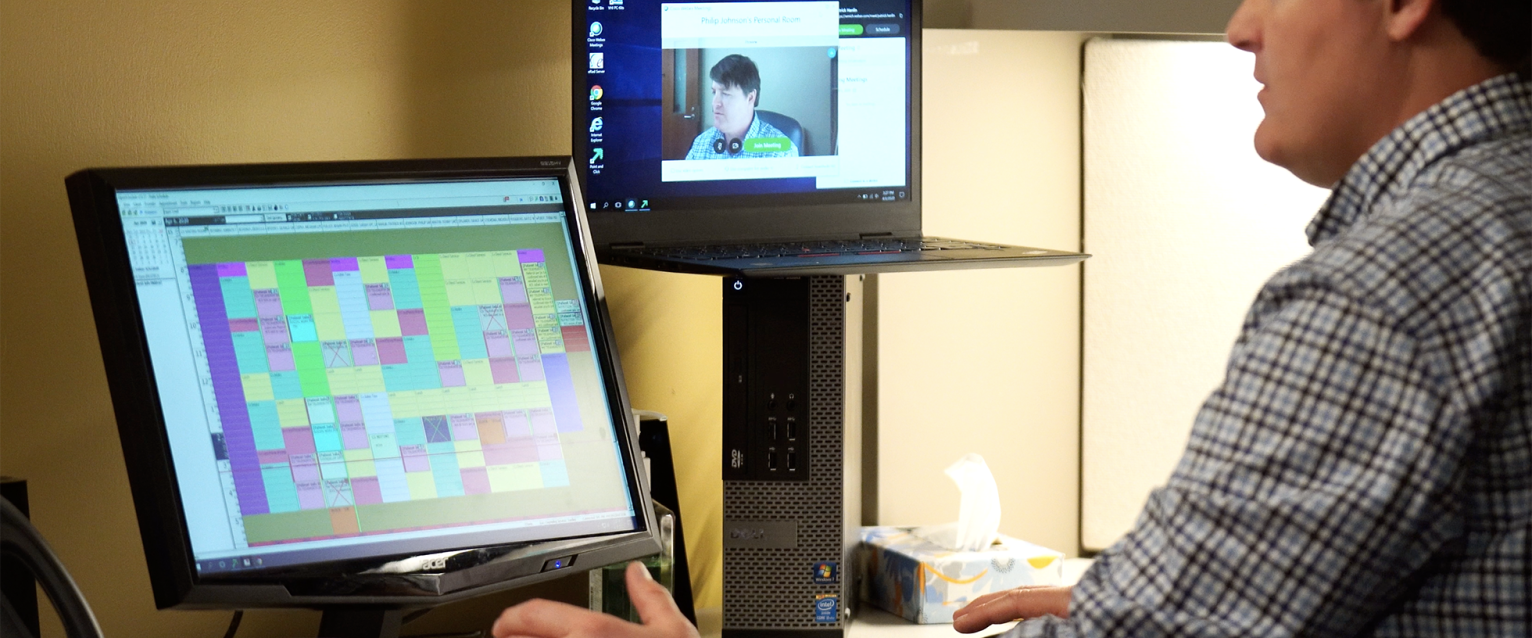
Testing and Tracing
9,050
31,074
191

Tracking Testing
Daily Screening Surveys

Vaccination Ready
Organizing
Partnering
Preparing
We never stopped.
Health center staff continued seeing patients for reasons other than COVID, and the University community adapted to telehealth appointments for many concerns. With the gradual return to on-campus activity, our clinic providers began seeing non-contagious conditions in person. Pharmacy operations continued through the year uninterrupted, and Sports Medicine providers came back to work as soon as state guidance allowed.
All of the programs and capabilities needed to meet the pandemic head on were developed in concert with University partners while they—and we—continued the daily work of the center.


